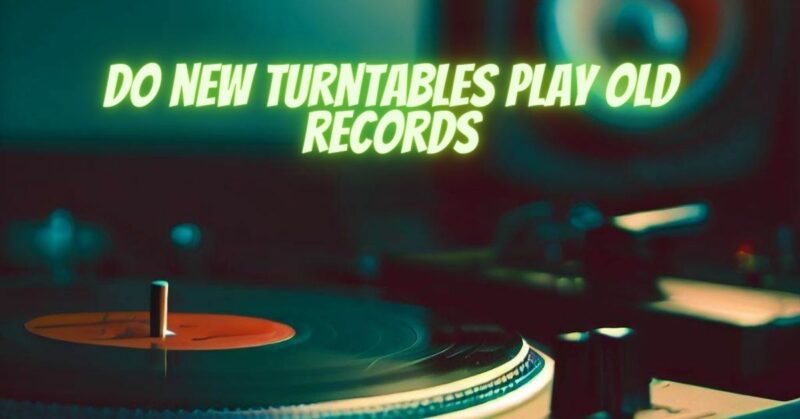The allure of vinyl records spans generations, with enthusiasts valuing both modern music releases and the vintage gems from the past. A common question arises when considering modern turntables: can they effectively play older records without compromising sound quality or damaging the vinyl? In this article, we’ll explore the compatibility of modern turntables with older records and shed light on the considerations that come into play.
Understanding Turntable Design Evolution
Modern turntables have evolved to accommodate the demands of today’s audio landscape while preserving the essence of vinyl playback. These turntables incorporate contemporary features and engineering advancements, ensuring a balance between tradition and innovation.
Compatibility Factors
- Playback Speeds: Vinyl records from different eras may have been produced with varying playback speeds. Modern turntables generally offer the standard playback speeds of 33 1/3 and 45 RPM, which cover the majority of vinyl releases. Some even include the less common 78 RPM for compatibility with very old records.
- Tonearm and Cartridge Adjustability: Modern turntables often feature adjustable tonearms and cartridges. These adjustments allow for precise tracking force, anti-skate settings, and cartridge alignment, which are crucial for maintaining proper playback of older, potentially worn records.
- Stylus Profiles: The stylus profile of the cartridge can influence how it tracks the grooves. While elliptical and microline stylus profiles are suitable for modern records, older records with wear might benefit from conical or spherical stylus profiles that track wider grooves.
- Phono Preamps: Some modern turntables include built-in phono preamps. These preamps offer compatibility with older records that were originally mastered for playback with a phono preamp, which amplifies the low-level signal produced by the cartridge.
- Anti-Vibration and Isolation: Modern turntables often incorporate anti-vibration and isolation features to reduce resonance and minimize the impact of external disturbances, ensuring accurate playback of older records.
- Record Condition: The condition of the older record is a significant factor. Records that are heavily worn, scratched, or damaged might not provide optimal playback regardless of the turntable’s capabilities.
Considerations for Optimal Playback
- Tracking Force: Adjust the tracking force of the cartridge based on the manufacturer’s recommendations. This helps prevent excessive wear on older records and ensures accurate tracking.
- Stylus Choice: Consider using a stylus with a profile suitable for older records if you have a diverse collection spanning different eras.
- Cleaning: Ensure that your older records are clean to prevent debris from affecting playback and causing unnecessary wear on the stylus.
Modern turntables are designed with compatibility in mind, aiming to provide an optimal playback experience for both contemporary and older vinyl records. With adjustable settings, versatile stylus profiles, and built-in phono preamps, modern turntables offer the flexibility to enjoy the richness of older records while benefiting from the engineering advancements of today. While some adjustments may be necessary to accommodate varying record conditions, a well-maintained modern turntable can faithfully reproduce the timeless classics of yesteryears.


